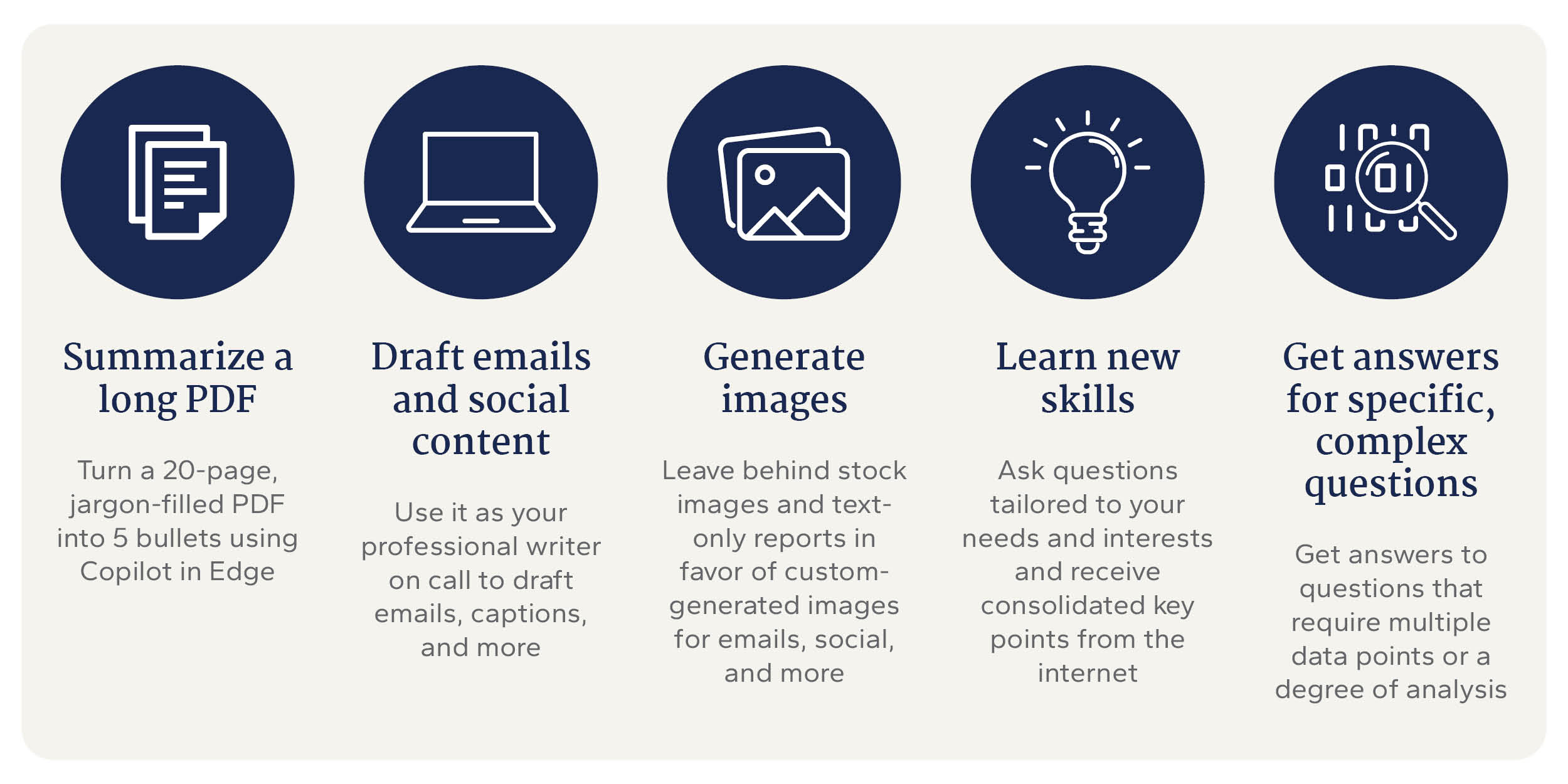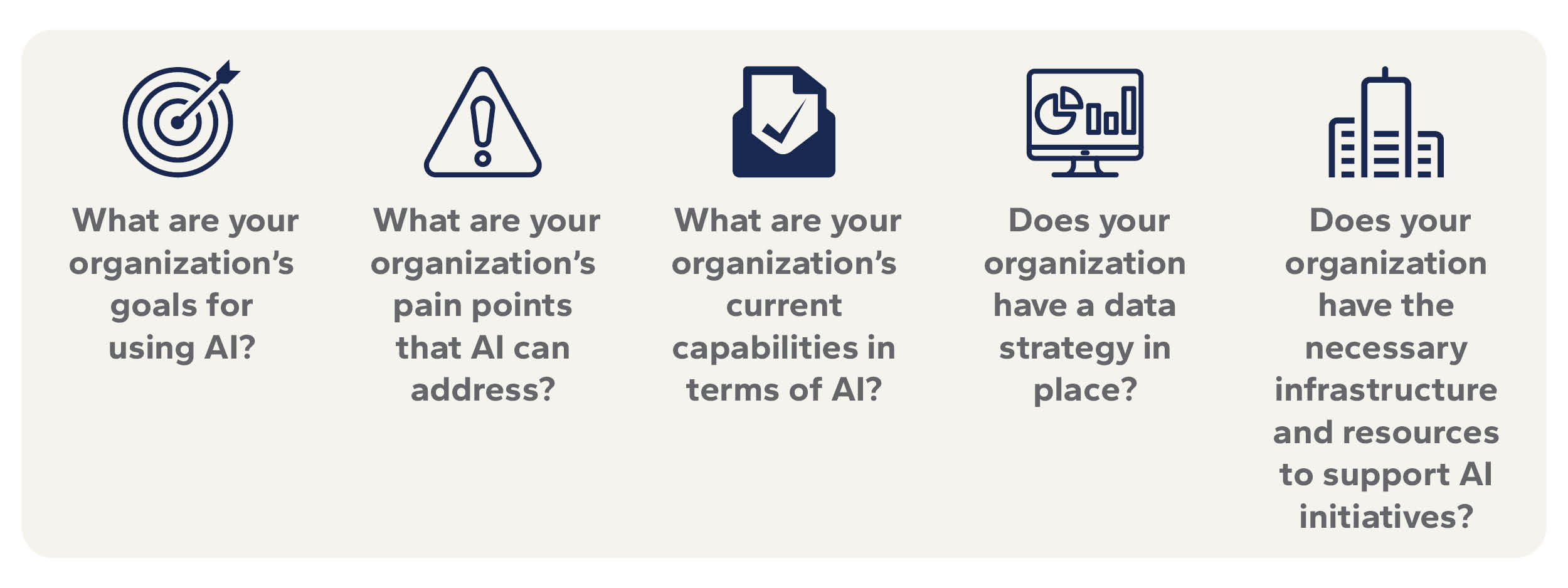Key Takeaways
- Microsoft Copilot is an AI functionality integrated across Microsoft applications, designed to enhance productivity, security, and efficiency within organizations.
- Copilot supports users across business functions and applications, including Microsoft 365, Dynamics 365, Fabric, and Azure.
- Applying AI strategically across your organization requires accessible, high-quality data, targeted business objectives, and a clear change management plan.
The rapid deployment of AI has augmented the pressure to outcompete. In a recent McKinsey survey, organizations using AI reported a decrease in cost and an increase in revenue. As organizations work to get ahead, they are looking for the most accessible ways to integrate AI into their everyday workflows.
Organizations using the Microsoft platform can access Microsoft’s built-in AI functionality, Copilot. From your business management system and productivity tools to your data ecosystem, here’s a closer look at how you can leverage Copilot across your organization.
Copilot for Productivity and Security
Users of Microsoft 365 applications — Outlook, Teams, Word, Excel, etc. — can use Copilot to increase efficiency and productivity and allocate more time to tasks requiring higher-level thinking and strategy.
Workday Efficiencies with Copilot:

According to Microsoft’s Work Trend Index, 67% of early Copilot users reported that Copilot saved them time so they could focus on more important work.
Copilot in Edge
Copilot in Microsoft Edge provides an accessible way for organizations to enhance productivity while keeping their data safe. Users can leverage the web browser for web-based tasks, such as summarizing web pages, gathering information, and assisting with online research, or content creation tasks like drafting and editing.
Copilot in M365
While Copilot in Edge stands alone, Copilot in M365 is embedded within the Microsoft Office applications. It can help with document and data management, such as creating and editing documents, spreadsheets, presentations in emails. It can also perform complex data analysis, generate insights, and create visualizations.
Watch the first installment of our Exploring Microsoft Copilot series to see Copilot for Productivity and Security in action.
Copilot for Business Applications
Copilot for Microsoft Dynamics 365 enhances business operations by increasing efficiency in the CRM and ERP functions. The vast majority of early Copilot for Sales users — 83% — reported an increase in productivity, while customer service agents using Dynamics 365 Customer Service reported a 12% reduction in time spent resolving cases.
Role-Based Functionality
Copilot for Microsoft Dynamics 365 can analyze vast amounts of data to provide actionable insights, assist in managing customer relationships, streamline sales processes, and automate repetitive tasks.
Marketing and sales professionals can leverage natural language prompts, such as “Show me the sales performance report for the last quarter” or “Send a follow-up email to all contacts who attended the webinar last week,” while operational and financial professionals can ask questions such as, “Find all accounts with overdue invoices,” or “What are the top five products by sales volume this month?” to get immediate answers.
- Sales: Recap meetings, auto-generate opportunity potentials, and contextualize customer emails.
- Marketing: Generate content ideas, natural language audience segmentations, and simplified customer insights.
- Customer Service: Create customer responses, enhance self-service bots, and boost conversations.
- Field Service: Streamline work order creation, recommend technician scheduling, and recap work order progress.
- Finance & Operation: Create product descriptions, assess risk, and collections workspace.
- Supply Chain: Predict disruptions and summarize purchase order changes.
- SMB: Create product descriptions, reconcile bank statements, and find records to learn new skills.
Watch the second installment of our Exploring Microsoft Copilot series to see Copilot for Business Applications in action.
Copilot for Data and Analytics
Microsoft Fabric is the number one data source for Microsoft solutions. A true SaaS solution in the cloud, Fabric brings all your data needs — governance, security, location, analytics, engineering, ETL, and more — together under one umbrella.
Copilot for Fabric brings Copilot’s natural language capabilities to the Fabric ecosystem. For example, users now have the ability in PowerBI to connect to a data source and ask Copilot to build a report based on that data. A prompt could be, “Build me a report based on the last 12 months’ sales data from the southwest region. Only include sales whose total value is over $10,000 and make that into a line chart over time.” Even more, users who wish to track KPIs in real-time can leverage Data Activator in Fabric for real-time alerting on data and Power BI reporting.
Creating Your Own Copilot
Organizations can customize and create their own copilots using internal data by leveraging Copilot Studio or Azure AI Studio.
Copilot Studio
Copilot Studio is a low-code solution for creating and deploying AI-powered copilots. Leveraging existing content within an organization’s Microsoft 365 tenant, Copilot Studio makes it easy to integrate with current workflows and simplifies the deployment process across various channels.
Azure AI Studio
Azure AI Studio, on the other hand, is a pro-code solution that allows developers to create highly customized AI solutions with their own infrastructure, code, and data. It offers extensive customization options, allowing for the creation of complex and tailored AI models.
Watch the third installment of our Exploring Microsoft Copilot series to see Copilot for Data & Analytics in action.
Preparing for the Era of AI
To get your organization ready to leverage AI, examine the following:

Applying AI strategically in your organization requires accessible, high-quality data, targeted business objectives, and a clear change management plan. To see a successful AI implementation, you must:
- Secure your environment: Data security is paramount, both from outside your organization and within.
- Empower your team: Ensure your team has input, insights, and investment in AI.
- Iterate on your plan: Review business outcomes and adjust as necessary.
Leveraging Copilot in Your Organization
If you’re ready to begin leveraging Copilot in your organization, we can help. From AI strategy development and Copilot implementation to data strategy and custom AI solutions, our team will work with you to get your organization AI-ready.


